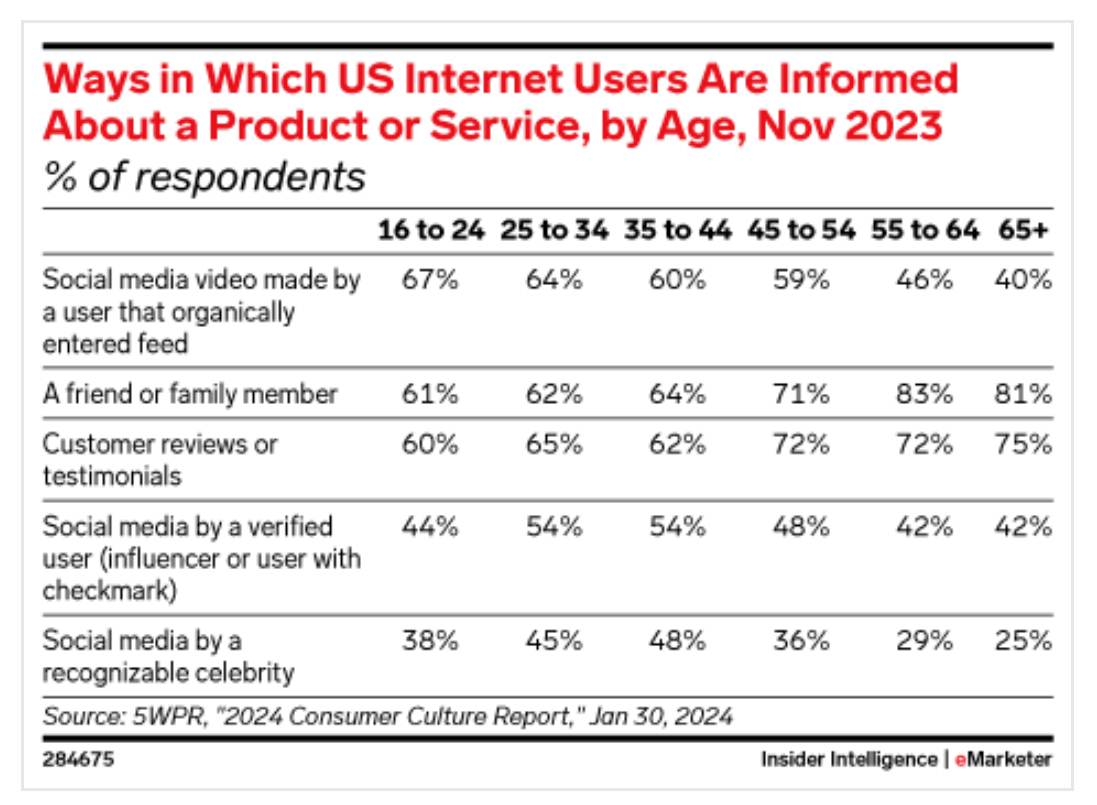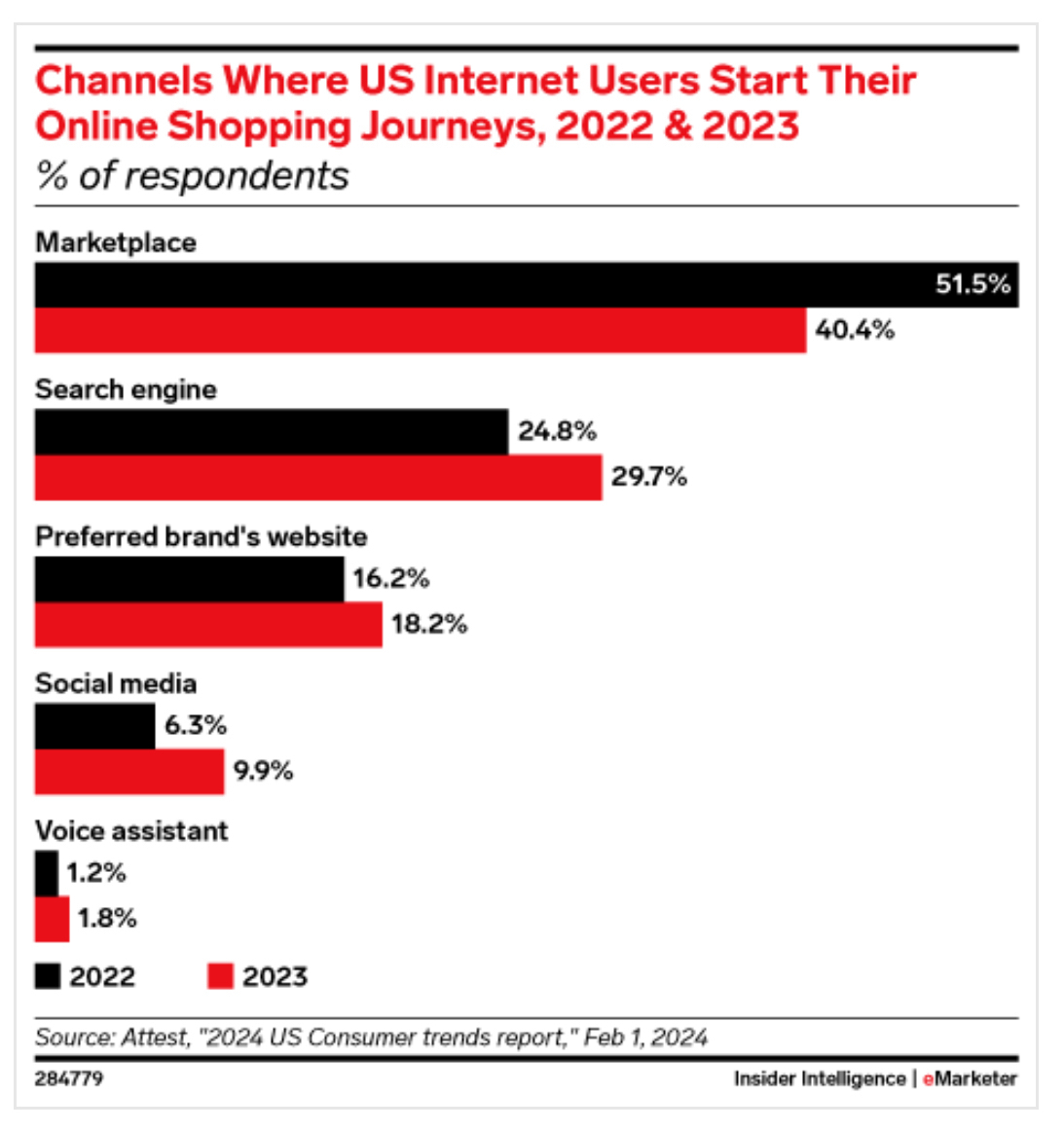Meta
🚨 Meta Is Broken
For the second time in just over a month, Meta’s apps, including WhatsApp, and to some extent, Messenger and Instagram, faced outages and intermittent issues.
Meta’s status page detailed disruptions to key business services, including its Ads Manager, Messenger Platform, WhatsApp Business API and others.
via TechCrunch
&
There has been a lot of talk on Twitter/X about Meta Ads being “broken”. This has happened before, but it’s never lasted longer than a few weeks. This time, many brands have seen soft performance for all of Q1.
there is no obvious cause/effect relationship between poor performance and a specific code push or platform outage on Meta’s side.
only some brands are seeing poor performance.
via No Best Practices (a must read for Meta advertisers)
Something is fundamentally broken at Meta (more than usual). Which means it’s a time to experiment freely, on and off the platform.
Looking forward to playing with this new reporting feature from Meta (because I’m a data nerd).
With the Engaged Customers Audience Segment, you can define your engaged customers using custom audiences, which provides reporting breakdowns specifically for this audience.
Meta now offers a new segment to analyze results in Ads Manager. Just go to the Breakdown menu and choose “Demographics by Audience Segments.” From there, you’ll see separate rows for New Customers, Existing Customers, and Engaged Customers
Cracking open the lid of the black box ever so slightly.
I’m a believer in the AI/algorithm-driven targeting but learning more about what audiences it finds success with can be helpful to fold back into other efforts.
Friday Bits & Bytes | 032924
Why Marketers need to embrace the funny when it comes to podcasting
While there’s no sure-fire formula to being funny, brands that lean into comedic ads find the effort has a good success rate.
A funny ad is a sticky ad
Marketing (and business) doesn’t have to be that serious, have some fun. It may even make your work better.
If only there were a “holiday” coming up that would let you safely try humor for your brand…
How consumers find new brands and products on social media, marketplaces, and brick-and-mortar retail in 5 charts
Here are 2:


Over two-thirds (67%) of US 16-to 24-year-olds say they’ve learned about a product or service through a social media video that organically entered their feed
But
Social media is just one part of the discovery mix. Online marketplaces or search engines are the top places where US consumers start their shopping journey
Outside of impulse purchases, discovery and shopping are two different phases.
Are Lookalikes Still Relevant?
I get that lookalikes are technically a bit more specific, in theory. You could find people similar to your paying customers, for example. I wonder if advertisers simply don’t trust the newer options as much as the tried and true lookalikes.
I’m just not convinced that lookalikes are any better than these other methods. I’ve mostly abandoned them completely as a result.
I am now very interested in this question. Mostly because I’m interested in what’s working on Meta.
And because I just made a bunch of lookalikes earlier today for an upcoming campaign. Wonder if that was time wasted…
What We Can Learn from Bad CEO Quotes
The CEOs of Kellogg and Wendy’s recently caused a bit of public outcry.
From the Kellogg end:
We’ve got to reach the consumer where they are, so we’re advertising about cereal for dinner. If you think about the cost of cereal for a family versus what they might otherwise do, that’s going to be much more affordable.
Meanwhile, at Wendy’s:
Beginning as early as 2025, we will begin testing more enhanced features like dynamic pricing and daypart offerings
(That’s fancy talk for surge pricing.)
Shockingly, customers (or at least social media users) didn’t love these statements.
But those customers (and social media users) weren’t the target audiences. These were said for Wall Street—intended to juice stock prices, not excite customer bases.
Just like with supply chains a couple years ago, inflation and interest rates and market prices are hot topics right now. Which means a wider audience for statements like these—wider than the CEOs may be used to.
Contrast these statements with this approach from a CEO used to being in the public eye:
You can be sure this was intended to double as a call to investors about the quality and positioning of Meta’s VR product compared to Apple. Just like how “internal” memos at tech giants are written with the understanding that they’ll be leaked and become very much external memos.
So, uh, why am I quoting CEOs?
These statements (and the ensuing backlash) highlight that words and messaging matter.
People feeling the pinch of the highest food prices in 30 years don’t want to hear a CEO making millions of dollars a year say that people should eat his company’s cereal for dinner because it’s affordable.
Thanks to Uber and similar services employing surge pricing, “surge” or “dynamic” pricing feels negative because it usually means more expensive. I’ll quote Tyler Cowen because he covers everything I would have said:
I predict this will fail. For one thing, “we will have discounts for Tuesdays at 3 p.m.” would have been better marketing. Furthermore, many Wendy’s buyers are not wealthy, and they care a good deal about predictable prices.
(They even botched the walk back.)
Once you say something in public, you can’t guarantee which audience(s) receive it. The larger you become (in notoriety, headcount, etc) the fewer private communication channels you have.
Your content matters. And that content is a combination of words and tone.
Respect your customers. Choose your words. Earn trust & don’t burn it.
Also on Bluesky
Monday Marketing Links | 031824
Cookie Deprecation is Coming - Should Advertisers be Worried?
Apple blocked third party cookies for 100% of traffic back in 2020, and most brands see almost half of their traffic from Safari (!!!) So that impact has already been felt for a while now.
…
as long as you’re using ad platforms platforms (Google, Meta, TikTok, Email/SMS) and aren’t super reliant on display networks, there likely won’t be a major impact.
…
building out a CDP, beefing up first-party data capture, etc. Those are considered best practices anyway, and will become even more beneficial with all of the privacy changes on the horizon and beyond.
Cookies crumbled a while ago, Chrome phasing out third-party cookies is just the final nail in the crumb filled coffin.
Survey: Retailers should focus on loyalty, brand awareness
The vast majority of retailers believe that their customer experience is at or better than their peers, but new data says otherwise.
…
The top three strategic outcomes experienced retailers should be focused on, according to IDC and SAP, are improving customer loyalty (59%), improving brand awareness (50%), and empowering employees with the right data and tools (43%) to improve the customer experience.
Everyone thinks they’re above average, but that’s not how average works. And there’s usually room for improvement regardless.
Customer experience is a moat. The better the experience, the bigger the moat.
Big Tech accounts for nearly two-thirds of the US digital ad market
Big Tech (Amazon, Apple, Google, Meta, and Microsoft) will attract nearly two-thirds of US digital ad dollars this year
That’s more than double its share since we began tracking it in 2008.
LinkedIn plans to add gaming to its platform
boost the time people are spending on the platform, the company is breaking into a totally new area: gaming.
…
tapping into the same wave of puzzle-mania that helped simple games like Wordle find viral success
…
one idea LinkedIn appears to be experimenting with involves player scores being organised by places of work, with companies getting “ranked” by those scores.
Taking a page out of the old Facebook playbook and reinventing Solitaire for the browser-first workforce.
Money Stuff: Slorg is Sorry He Burnt Slerf
Basically the way crypto works is that a guy named Slorg makes up a token named Slerf, which is distinguished from other tokens by having a cartoon sloth logo. You send $10 million of Solana crypto tokens to Slorg, and he makes a note to himself that he owes you some Slerfs. Then he accidentally flushes that note down the toilet and, due to the irreversible nature of the blockchain, you get no Slerfs and your money is permanently gone, though Slorg is very sorry.
And now we know how crypto works!
mistake was very good for attention, and attention is the true value of any memecoin. So the obvious thing happened and the new tokens that were released shot up around 5,000%.
Also on Bluesky

